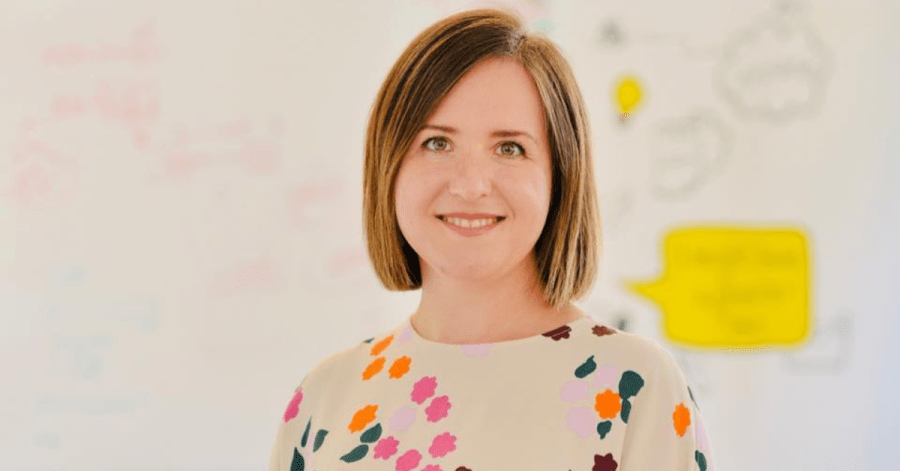You are scrolling briefly on social media and your eyes fall on a jacket that intrigues you. Given the speed with which AI is learning about our preferences and feeds info in and out into social media platforms, chances are high that it shows you exactly what you were looking for. Yet, imagine one further step: you take a pic of the jacket, upload it on your favorite fashion website, and get recommendations of similar articles you can purchase. No need for applying countless filters or browsing through endless pages. Minimum screen time, with maximum efficiency, or as Svetlana Kordumova tells me, “you shop what you see”.
Svetlana is the founder of Pixyle.ai, the Macedonian startup that brings the scenario above to life via their visual search solution. The company also has solutions for product data entry and enhanced product discovery. They are currently working with fashion retailers, but eventually plan to serve any e-commerce vertical. Already, the company is planning to expand into home and furniture by the end of the year, then raise a Series A and use the investment to launch into new verticals.
We reached out to Svetlana to learn more about the company’s mission and solution, why she jumped from a career in research to entrepreneurship, how AI tools can improve the customer experience and the retailer’s bottom line, and what is her advice for aspiring young women in science and technology.
The Recursive: As a young girl, what did you want to be growing up and how has this vision changed over the years?
Svetlana Kordumova: As a young girl, I was super good at maths. I think we all have superpowers and I think that was mine in school. I was the one solving the tasks super fast and going to maths contests, winning awards. I knew I should use my superpower in a way.
As a young girl, because my mother was an architect and I was also drawn to building things, I envisioned myself being an architect, too. But then in the 8th grade, we had our first informatics class. At that time we had MARTA computers. That’s when I first typed a code and it was visualizing these 3D shapes. And I found it so exciting. Even now I remember the exact feeling in the informatics lab. Then it was natural for me to follow a mathematical and informatics program in high school. With programming, you can see the results right away.
Around high school, for sure I knew I wanted to become a computer scientist, so I embarked on a computer science degree at university. In the fourth year of my studies, one of my professors went to Philips in Eindhoven and she recommended some of her best students for an internship. I was one of them and this was my first touch point with research and with AI. I fell in love with it. I worked on a research project on implementing technologies for shopping windows in physical stores. During this time, my mentor was encouraging me to do a PhD. I joined the computer vision community there, starting following the PhD options.
Then I went back to North Macedonia, finished my degree, and started working as a developer for Seavus. But after a year of working as a developer, I went back to my initial interest in research and AI and decided to do that PhD. I enrolled in a PhD program in AI at the University of Amsterdam and spent five years there.
After your research experience, what attracted you to the entrepreneurship world?
It was a bringing together of my various passions. I am passionate about technology and AI and while I was at the technology we were building this amazing image search and video search technology. At the same time, I was also an avid online shopper, and I would go to find something online and wonder why this technology that we are working on goes into scientific papers but is not applied in real life. This was the example that illustrated for me the gap between scientific research and industry. Also, I didn’t quite find myself in the academic world. I am much more dynamic, I want to communicate with people, and I was always told by my professors that I am a natural leader. So all things encouraged me and interconnected to form a vision of a product based on AI for the fashion industry. I started building a team and here we are today.
What is the mission of Pixyle.ai?
From the very beginning, the mission was to help people to find products online more easily. So this is what drives us and it’s all connected with the search experience. Instead of going through countless pages to find what you want, even with filters, you can add a visual element to it and “shop what you see”.
How can e-commerce and retail players use AI to their advantage?
It also depends on the use case. But we see that AI can be used to make the jobs of people easier, and on the other end make the shopping experience for end users much better. This is what is also happening with ChatGPT and this is what we do at Pixyle.ai.
How do you use AI at Pixyle.ai?
As a vision, we want to become the leading product data and enrichment platform for e-commerce companies around the world with visual AI. We have built a visual AI technology that is helping people discover products online more easily.
For that, we have three value streams. The first one is the product data entry suite, helping merchandising teams automate the process of inputting product data. For instance, as a shopper, to buy a dress online, you select different filters, and all the filtering data needs to be typed in manually. But with a picture of the dress, this can be run through our models and then we automatically generate descriptive product tags – red, floral pattern, short, etc. So, in a way, we give computers the vision to understand fashion. We also help merchandising teams boost their efficiency with product data entry and organization of their catalogue.
The second value stream regards the improvement of the product discovery on the site. We generate textual data for better product search. We have a lot of data from what e-commerce users are searching for and we generate tags based on that. So if you type in “spaghetti top” the system will generate relevant tags based on previous searches. It’s augmented search with enriched product data.
And the third value stream is called visual discovery and this is where we enhance the experience of the shoppers. You can upload any photo you see on social media to the e-commerce stores and we provide visual search, similar recommendations, and shop-the-look features so that the experience is improved. This further leads to better conversion and sales for e-commerce stores.
So far, how did you find the process of fundraising and having supportive investors on your side?
The fundraising process is quite extensive and tiring, however, with my co-founder we always want to take the best of it. So jumping on a lot of calls with investors helped push us as founders to think. Because investors are very smart people who have seen a lot of business and usually know what works and what doesn’t. So, we took every negative comment as a way to learn and improve our business. Although it was very tiring, it was also very rewarding.
Women are currently underrepresented in the tech ecosystem – a situation we are trying hard to change. What are the downsides of women being underrepresented and, in parallel, what unique benefits can women bring to the table in leading positions at tech companies?
In the field of AI, women are even more underrepresented, so I always get this question, which for me is difficult to answer. I never want to be seen differently because I am a woman, I want to be acknowledged and respected for what I do, and not for my gender. When I have doubts and challenges, I don’t put this on account of being a woman, but I take it as a challenge for me to improve. Why are they doubting – am I now the one presenting the product better or not having a good enough business model? I am very content-driven.
Why do we need more gender equality? Because both genders have their strengths and weaknesses, and it’s good to have a balance in the team. Women by default have more empathy and I have seen men leaders who are very result-driven but I think women are a bit more people-driven, which is great for creating a healthy culture in an organization.
What advice would you give to young women at the start of their careers in tech and science?
To always keep learning and get better. It all comes from us. Sometimes you get hurtful comments. But never be discouraged by someone trying to assign you to a different position. Block it. Never let comments from anyone get to you, focus on your strengths and keep learning.
Where do you get your motivation on those days when nothing works?
I think sleeping and running help a lot. I had times when I received negative comments and suggestions that I was on the wrong path. You can get depressed for a while after a negative comment, but if you sleep on it, you can find the strength to make it better. I am also lucky to have a good support system, family and friends and people inspiring me and helping me in those down times.
The Pixyle.ai team is based in Macedonia. How do you see the evolution of the local and regional tech ecosystem in the past few years? And what are the opportunities for its next stage of growth? I am happy to see that the regional ecosystem is growing and that more startups are being formed by great local entrepreneurs. What I feel is lacking is experience. There should be a generation of startups that have made it and then they can pass on the baton to the next generation. Currently, we are at the stage of the first line of startups trying to make it. But we balance that with having an extensive network. So I see even more value for founders to stay connected to each other. For instance, I was part of the founders’ retreat organized by Startup Macedonia. We have the same problems and challenges and supporting each other and talking about how we did this or that is crucial. I think we are on a good track.








